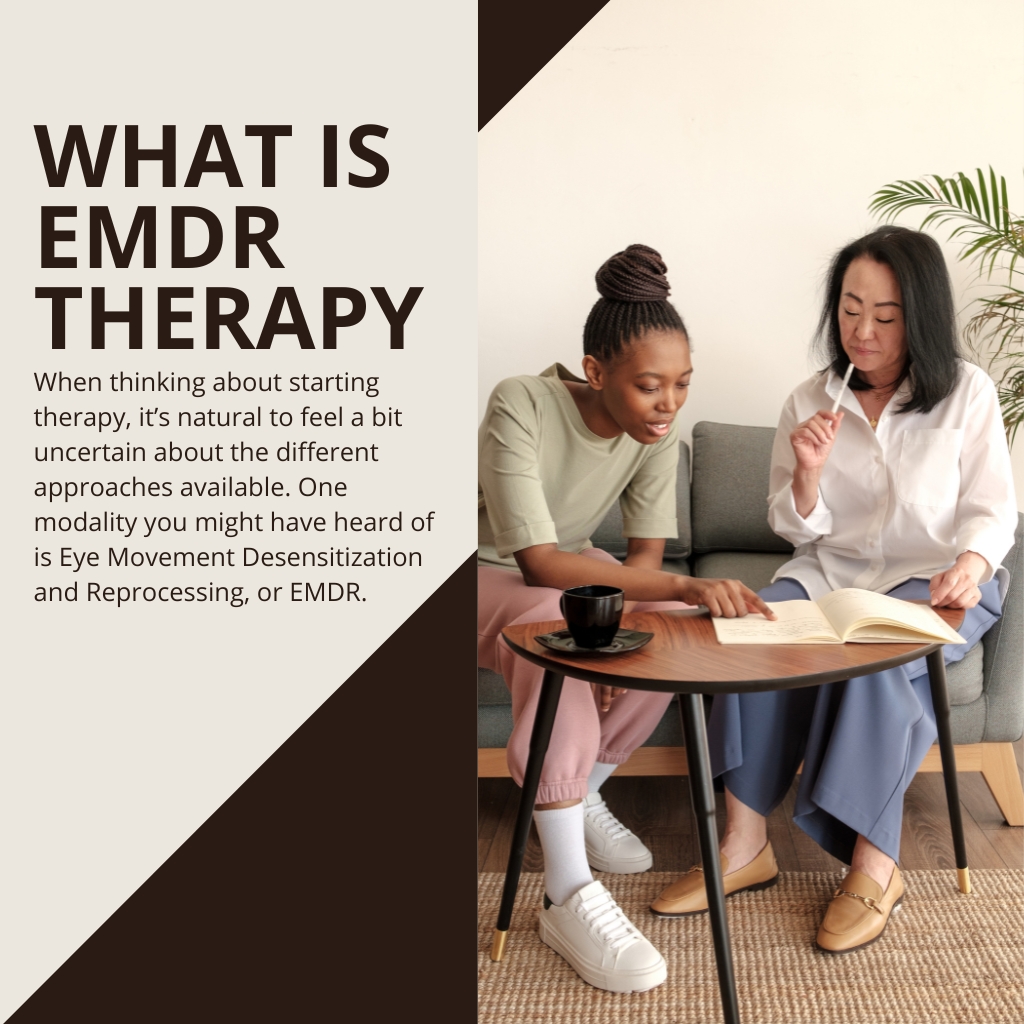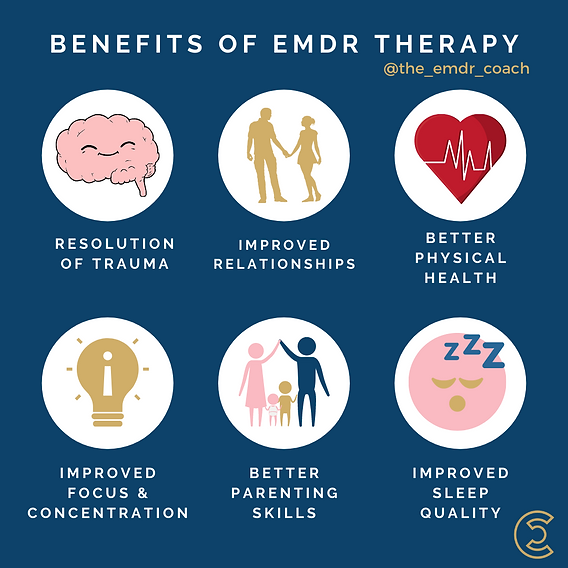How EMDR Therapy Functions: an In-depth Take A Look At the Refine and Its Performance
EMDR therapy has actually become a prominent therapy for trauma-related disorders. Its structured technique includes different stages created to promote the processing of stressful memories. Central to this technique is the concept of bilateral stimulation, which plays an important role in just how memories are refined. Understanding these components reveals much concerning the treatment's performance. Nonetheless, what especially happens during an EMDR session, and how does it impact the therapeutic journey?
Recognizing the Concepts of EMDR Treatment
EMDR therapy, or Eye Activity Desensitization and Reprocessing, operates on the facility that unsolved stressful experiences can hinder emotional well-being. This ingenious healing strategy intends to facilitate the handling of distressing memories, enabling individuals to gain a healthier perspective on their past. Central to EMDR is the principle of bilateral excitement, usually attained via led eye motions, which is thought to help incorporate terrible memories right into a more flexible structure.

The 8 Stages of EMDR Therapy
The procedure of EMDR treatment unfolds over eight distinct phases, each made to direct clients through a structured approach to healing trauma. The initial phase involves history-taking, where the therapist assesses the client's history and identifies target memories. In the 2nd phase, clients find out relaxation methods to handle distress. The third stage concentrates on identifying unfavorable beliefs connected with the stressful memory.
The 4th phase is where the desensitization procedure starts, allowing customers to process the traumatic memory. The fifth stage involves setting up positive beliefs to change the unfavorable ones. In the sixth stage, customers are directed to examine their physical and psychological feedbacks to the refined memory. The seventh phase emphasizes closure, aiding customers go back to a state of stability. The 8th stage entails reevaluation, where clients and therapists evaluate progression and resolve any kind of recurring distress. This detailed method promotes a pathway to healing and strength.
The Role of Bilateral Stimulation
Bilateral excitement is a crucial component of EMDR treatment, facilitating the handling of stressful memories. This technique includes rotating excitement of both hemispheres of the brain, normally accomplished through eye activities, acoustic tones, or responsive experiences. The function of reciprocal stimulation Learn More is to engage the mind's natural info handling system, which might become interrupted following trauma.
By activating both sides of the mind, reciprocal excitement assists customers access and reprocess distressing memories in a more adaptive means. This technique motivates the combination of traumatic experiences, lowering their psychological charge and making it possible for clients to establish brand-new viewpoints.

In addition, bilateral excitement might promote relaxation and reduce anxiety throughout sessions, producing a more secure atmosphere for clients to challenge painful memories. Eventually, this technique improves the therapeutic process, allowing individuals to approach recovery and resolution.
Evidence Sustaining the Efficiency of EMDR
Research study has actually revealed that EMDR treatment is effective in dealing with various emotional problems, specifically post-traumatic stress and anxiety condition (PTSD) Various researches have demonstrated substantial decreases in PTSD signs complying with EMDR treatment. As an example, a meta-analysis of randomized regulated tests located that EMDR was as efficient as cognitive behavior therapy (CBT) for PTSD, with long read review lasting results observed even months after therapy. Furthermore, the American Psychological Organization and the Globe Wellness Organization support EMDR as a suggested therapy for trauma-related conditions.
Past PTSD, study suggests that EMDR can also benefit individuals struggling with anxiousness, clinical depression, and helpful resources fears. An expanding body of proof supports its usage in diverse populations, consisting of veterans and youngsters - emdr therapy new york. Overall, the accumulating research underscores EMDR's prospective as a flexible healing choice, leading the method for further exploration right into its mechanisms and applications in psychological wellness treatment
What to Expect During an EMDR Session
Throughout an EMDR session, customers can anticipate an organized yet versatile technique focused on handling terrible memories. The therapist begins by establishing a secure atmosphere, where clients can really feel comfy sharing their experiences. First discussions concentrate on determining certain memories and associated adverse beliefs.
Clients are led to concentrate on these memories while simultaneously participating in bilateral excitement, normally through guided eye motions or touching. This dual focus aims to assist in the handling of the injury, enabling customers to reframe their experiences and reduce psychological distress.
Throughout the session, specialists monitor customers' reactions, readjusting the speed and approach as needed. Sessions may include relaxation strategies or cognitive restructuring to strengthen favorable beliefs. Overall, clients can prepare for a supportive environment that encourages self-exploration and healing, ultimately causing a higher sense of psychological wellness.
Often Asked Concerns
Is EMDR Therapy Appropriate for Kid or Adolescents?
EMDR treatment can be appropriate for kids and teens, provided it is adjusted to their developmental requirements (licensed emdr therapists nyc). Medical professionals commonly modify methods to ensure safety and security and performance, sustaining younger populations in processing trauma and emotional distress
For How Long Does EMDR Therapy Commonly Last?
EMDR treatment generally lasts between 8 to 12 sessions, with each session varying from 60 to 90 minutes. Private demands and the complexity of injury can affect the general duration of therapy.
Can EMDR Therapy Be Done From Another Location or Online?
EMDR treatment can undoubtedly be performed from another location or online. Numerous experts have adapted their techniques to digital atmospheres, allowing customers to take part in efficient sessions from the convenience of their homes, keeping healing advantages.
What Are the Possible Negative Effects of EMDR?
Possible adverse effects of EMDR therapy may include momentary psychological distress, enhanced anxiousness, dazzling memories, and physical discomfort. People might also experience fatigue or migraines following sessions, as the mind refines intense sensations and memories.
Exactly How Does EMDR Contrast to Typical Talk Therapy?

EMDR treatment, or Eye Movement Desensitization and Reprocessing, operates on the facility that unsettled traumatic experiences can hinder psychological wellness. The process of EMDR treatment unfolds over 8 distinct stages, each made to guide clients via an organized technique to recovery injury. Reciprocal stimulation is a necessary part of EMDR treatment, facilitating the handling of traumatic memories. Throughout an EMDR session, clients can anticipate a structured yet versatile method aimed at processing stressful memories. Prospective side effects of EMDR treatment may include short-lived emotional distress, enhanced anxiousness, dazzling memories, and physical discomfort.